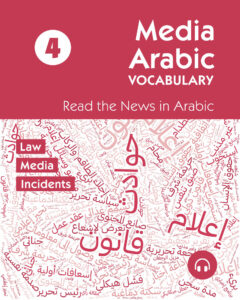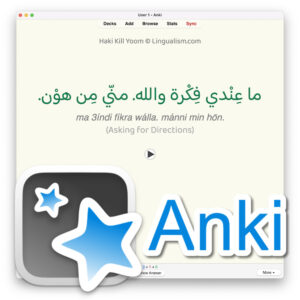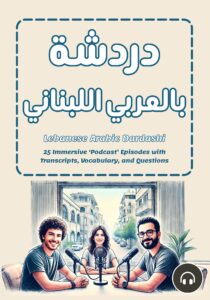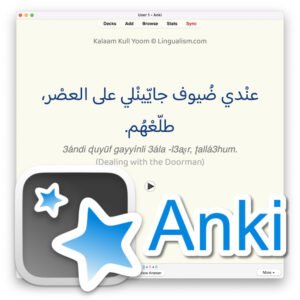Arabic vs. Arabic: A Dialect Sampler is meant for browsing, or better put, exploring. You are not expected to methodically work your way through the materials in the book and memorize all of the information. This would be both tedious and of little use. Instead, you are meant to study the tables just enough to make observations, deductions, and develop a better understanding of the similarities and differences between various dialects of Arabic and MSA. Flip through the book, see what interests you, play the audio, be observant, take notes. Audio tracks are available to download or stream free of charge from the book’s product page.
Audio track numbers appear at the top of each table in the book:


Synonyms are separated by a forward slash or appear on a new line in the tables. In the audio tracks, you will hear synonyms separated by a chime:
Plural nouns appear in parentheses in the tables:

Perfect/imperfect verb pairs are separated by a dash. In the audio tracks, these are separated by a short pause (without a chime):

Circle, underline, highlight words and phrases in the tables. It’s your book. Mark it up. Make it your own! There are also special pages (“Your Notes”) for note-taking at the back of the book. (See p. 127.) If you are against writing in your book or have a digital copy and prefer taking notes on paper, use a notebook. You can also download a PDF of the Your Notes section to print out for personal use.
Every effort has been made to provide accurate tashkeel (diacritics) to illustrate the pronunciation of words and phrases in the dialects. If what you hear on the audio tracks does not, according to your ear, match the tashkeel, by all means, write over the tashkeel to correct it. There will always be some level of subjectivity here, especially since the dialects possess different vowel qualities that are not always easy to represent with tashkeel designed for MSA.
In this book, the diphthongs /ay/ and /aw/ are shown with fatha and sukuun, as in the MSA بَيْت /bayt/ and يَوْم /yawm/. To represent the long vowel sounds /ē/ ([e:]) and /ō/ ([o:]) found in many dialects, only sukuun is written, as in the Egyptian بيْت /bēt/ and يوْم /yōm/.
You will notice that certain consonants differ in pronunciation among the dialects. ج may sound like [dʒ] (as in English job), [ʒ] (as in vision), [g] (as in go), and even [j] (as in yes), depending on the dialect. ق is often [ʔ] (the sound of hamza) or [g]. The emphatic consonants ظ and ضalso tend to have varied pronunciations among the dialects. And listen carefully to the Moroccan ت! Keep your ears open and take notes.
Some words of foreign origin contain sounds not easily represented with the standard letters of the Arabic alphabet. Special letters represent these sounds: ڥ [v], پ [p]. In some dialects, you will also see ڨ [g] and چ [tʃ] (as in chair).
Are you ready? Press play on track 1 and meet the 15 people who are representing MSA and the fourteen dialects featured in the book.
This article is taken from the How to Use This Book section of the book Arabic vs. Arabic: A Dialect Sampler.
-
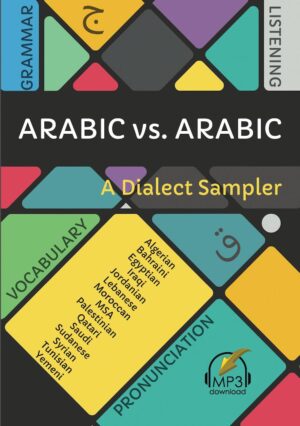
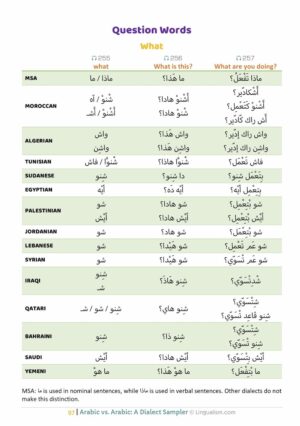
-
Sale!
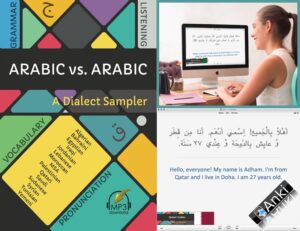
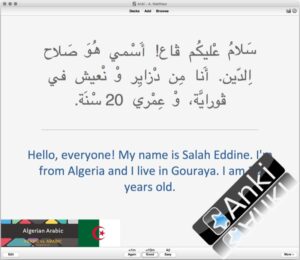
Arabic vs. Arabic: Anki Flashcard Decks (Collection of 15 Decks)
Rated 5.00 out of 5$44.85Original price was: $44.85.$26.91Current price is: $26.91.




